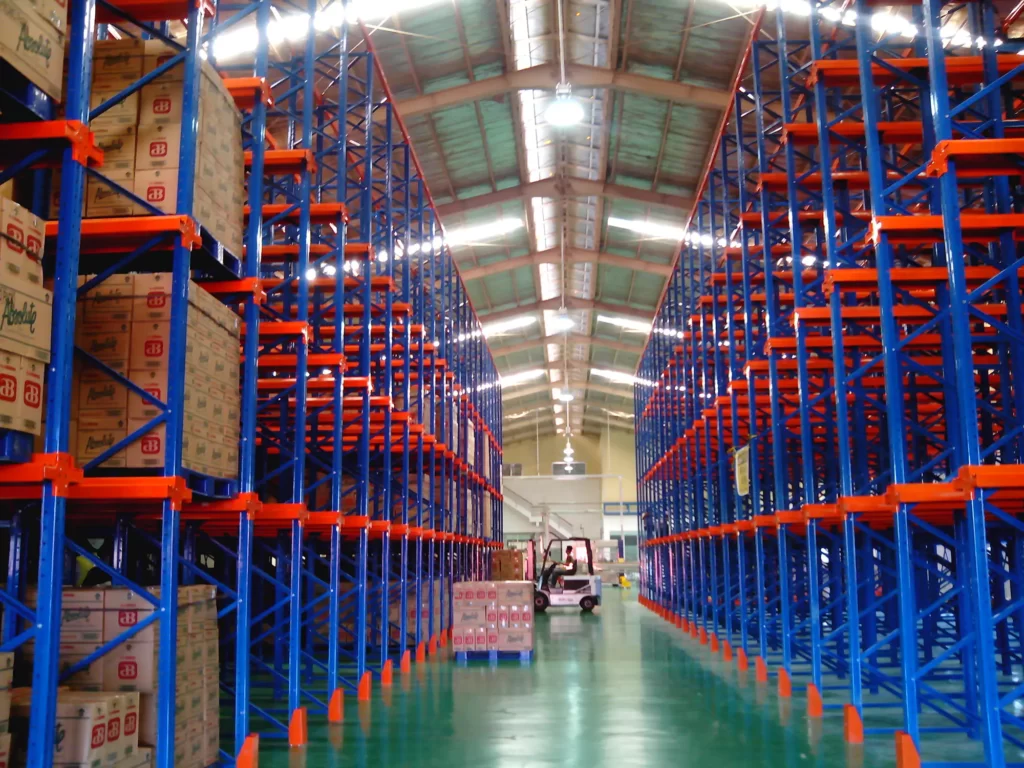Pallet racking is an excellent storage solution for many warehouses and industrial facilities. It provides a cost-effective way to store large quantities of goods, making it a critical component of many businesses’ operations.
However, sometimes businesses need to reorganize or relocate their warehouse space, and in such cases, they may need to disassemble their pallet racking. Disassembling pallet racking can be a complex and potentially dangerous task, so it’s essential to take the proper precautions and follow the right steps to ensure a safe and successful process.

In this article, we’ll go over the steps you need to take to disassemble pallet racking and the tools and equipment required to get the job done efficiently and safely.
Preparing for Disassembly
Before beginning the process of disassembling pallet racking, it’s essential to take the necessary precautions to ensure that the process is safe and effective.
The following steps can help you prepare for disassembling pallet racking:
Safety Considerations and Precautions
- The first and most crucial step in preparing for disassembly is ensuring that everyone involved in the process understands and follows the appropriate safety protocols.
- Workers should wear appropriate personal protective equipment, such as hard hats, safety glasses, and steel-toed boots, to protect against falling objects and other hazards.
- They should also be trained in properly using the tools and equipment required for disassembly to avoid accidents or injuries.
Equipment and Tools Needed
You’ll need a few essential tools and pieces of equipment to disassemble pallet racking properly. Some of these include:
- Wrenches and ratchets: These are essential for removing nuts and bolts that secure the pallet rack components.
- Screwdrivers: You may need screwdrivers to remove screws or other fasteners that secure certain pallet racking components.
- Pliers: Pliers can be helpful for holding nuts or bolts in place while you loosen or tighten them with a wrench or ratchet.
- Pry bars: Pry bars can help separate stuck or difficult-to-remove components.
- Hammer: A hammer can be used to tap or knock components loose or to help remove stubborn bolts or pins.
- Forklift or other heavy machinery: You’ll need a forklift or other heavy machinery to lift and move the pallet rack components once they’re disassembled.
- Safety gear: This includes gloves, safety glasses, and hard hats, which can protect you from injury while disassembling the pallet racking.
Note that the specific tools and equipment needed may vary depending on the type of pallet racking you have and the manufacturer’s instructions for disassembly. It’s always a good idea to review the manufacturer’s instructions and consult with a professional if you’re unsure about the tools or equipment you need.
Clearing the Area and Removing any Items from the Racking
- Before beginning the disassembly process, clearing the area around the pallet racking is essential. Remove any objects, materials, or debris that could obstruct the work area or pose a safety hazard.
- If any items are stored on the racking, you’ll need to remove them before disassembly. This may require using a forklift or other equipment to remove the items from the racking safely.
Assessing the Racking System
- Before disassembling the pallet racking, it’s important to inspect the racking system and assess its current condition. This can help you identify potential hazards or issues affecting the disassembly process.
- Inspect the racking system for signs of damage, such as bent or warped beams, missing safety pins, or corroded metal. If you identify any damage, take appropriate steps to address it before disassembling the racking system.
- It’s also important to ensure that the pallet racking complies with local and state regulations. If the racking system does not meet the required safety standards, it may need to be modified or replaced before it can be used again.

Creating a Disassembly Plan
- Before beginning the disassembly process, it’s a good idea to create a detailed plan for how you will dismantle the pallet racking. This can help you stay organized and on track throughout the process.
- Your disassembly plan should include a list of all the tools and equipment you’ll need and a step-by-step breakdown of the disassembly process. You may also want to assign specific roles and responsibilities to each team member.
- Be sure also to include any safety precautions or protocols in your disassembly plan to ensure that everyone involved in the process is aware of the risks and how to minimize them.
Identifying and Mitigating Risks
- Disassembling pallet racking can be a hazardous process, and it’s crucial to identify and mitigate any risks before beginning the process.
- Some potential risks include falling objects, equipment malfunctions, and electrical hazards. Be sure to take appropriate steps to minimize these risks, such as securing loose objects, inspecting equipment before use, and turning off any electrical power in the area.
- It’s also important to consider the physical limitations of your team members. Heavy lifting, awkward positions, and other physical demands can increase the risk of injury. Consider using heavy machinery or other tools to assist with the disassembly process and minimize the physical strain on your team.
By taking the necessary safety precautions and preparing the work area, workers can minimize the risk of accidents or injuries during the disassembly process. Ensuring that all equipment and tools are in good condition and that workers are appropriately trained in their use can also make the process more efficient and effective.
How to Disassemble Pallet Racking
Now that we are done with the first step, we are ready to disassemble the pallet racking system. In the lines below, we have tried to walk you step-by-step through the disassembly process.
Removing the Beams
- The first step in disassembling pallet racking is removing the beams. Begin by locating the safety pins that secure the beams to the uprights.
- Use a hammer or other tool to remove the safety pins from each beam. Be sure to store the safety pins in a safe place for later use.
- Once the safety pins have been removed, use a pry bar to pry the beam away from the upright gently. Be careful not to damage the beam or the upright in the process.
- Repeat this process for each beam until all beams have been removed from the uprights.
Removing the Uprights
- Once all of the beams have been removed, the next step is to remove the uprights. Start by removing any cross braces that may be connecting the uprights to each other.
- Next, use a wrench to remove the bolts that secure the uprights to the floor. If the uprights are attached to the wall, use a pry bar to pry them away from the wall gently.
- After the bolts have been removed or the uprights have been detached from the wall, use a forklift or other heavy machinery to lift the uprights out of their brackets or supports carefully.
- Be sure to store the uprights safely and securely until they can be properly disposed of or reused.
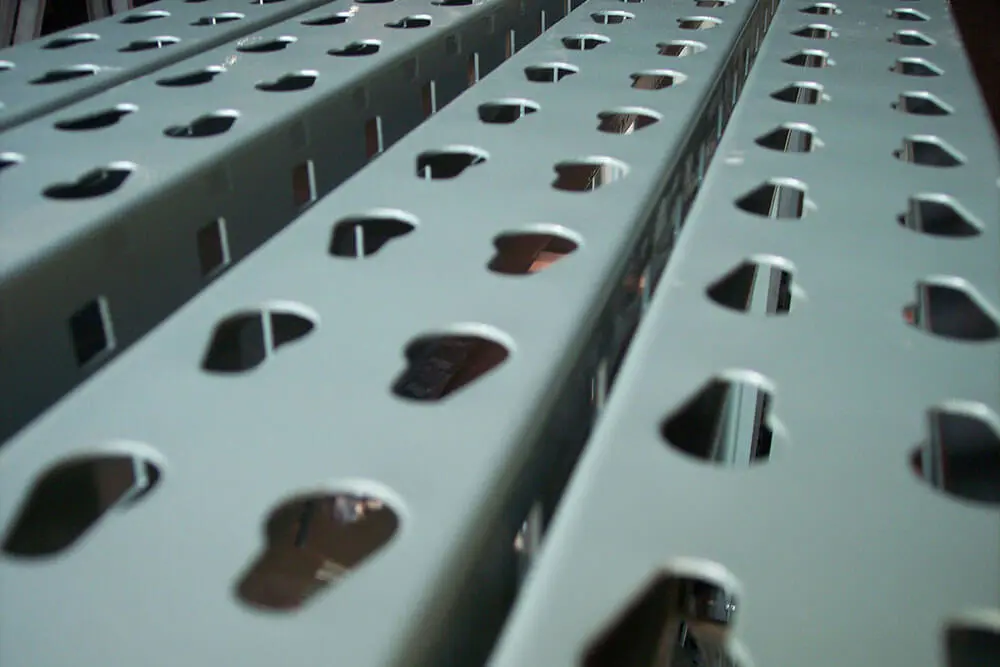
Disposing of the Pallet Racking
Once the pallet racking has been disassembled, you’ll need to decide how to dispose of it. There are several options for disposing of pallet racking, including selling it, recycling it, or disposing of it as scrap metal.
- If you plan to sell the pallet racking, be sure to clean it thoroughly and inspect it for any damage before putting it on the market. You may be able to find a buyer through a local business directory, online marketplace, or by reaching out to other businesses in your industry.
- If you plan to recycle the pallet racking, be sure to research local recycling facilities to determine which materials they accept and their requirements for accepting large quantities of pallet racking.
- If you plan to dispose of the pallet racking as scrap metal, be sure to follow all local and state regulations for disposing of hazardous materials.
Labeling and Storing Components
- As you disassemble the pallet racking, it’s important to label and store each component properly to make reassembly easier if you plan to reuse the racking system.
- Use a marker or label maker to clearly mark each beam and upright and other components with a unique identifier. This can help you keep track of each component and ensure that they are reassembled in the correct order.
- Once labeled, store the components securely to avoid damage or loss. It’s best to store them in a covered area to protect them from the elements and to avoid any potential tripping hazards.
Disassembling High-Level Racks
- Disassembling high-level pallet racks can be more complex and dangerous than lower-level racks. It’s important to take extra safety precautions to avoid accidents or injuries.
- Start by removing the decking and any other components on the top level of the racking system. Use a forklift or other heavy machinery to lower the beams and uprights to the ground safely.
- Once the high-level components are safely on the ground, follow the same steps for disassembling lower-level racks.
By following these disassembly steps, you can safely and efficiently disassemble your pallet racking. Properly disposing of the pallet racking can help you minimize waste and reduce the environmental impact of your operations.
Some Insights into Disassembling Different Types of Pallet Racks
Disassembling different types of pallet racking may require different procedures or tools, depending on the specific design and configuration of the racking system.
Here are some insights on disassembling different types of pallet racking:
1. Selective Racking
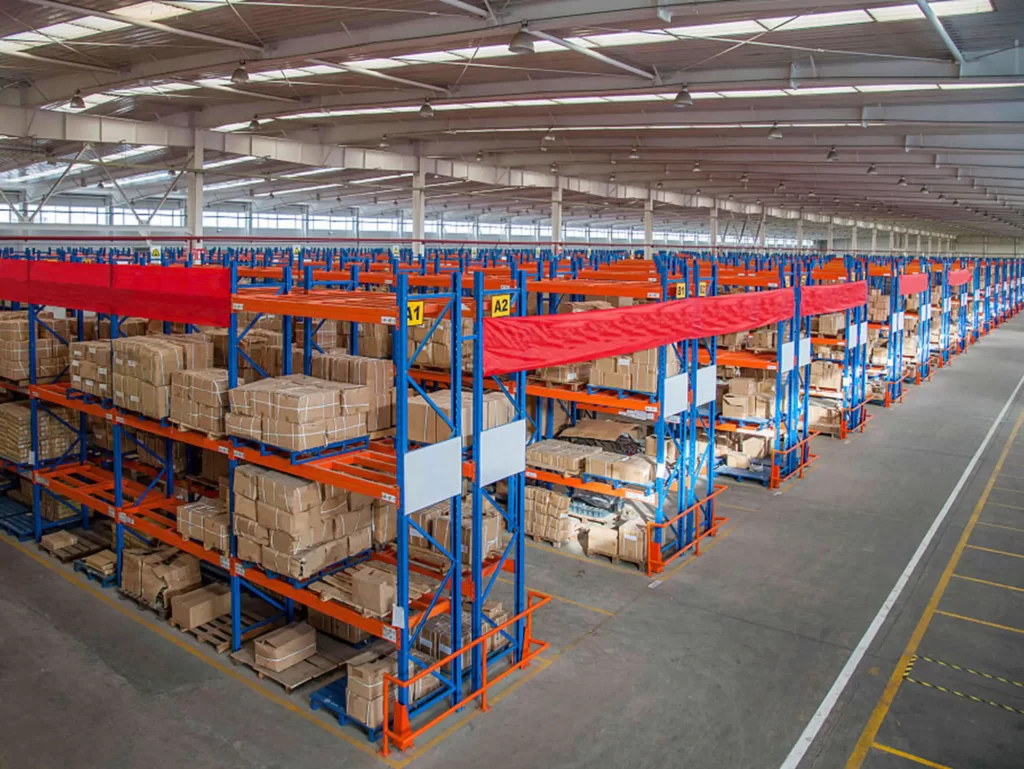
Selective racking is the most common type of pallet racking and typically consists of horizontal beams and vertical uprights that are bolted together. To disassemble selective racking, remove any stored items from the racking system.
Then, use a wrench or ratchet to remove the bolts that secure the beams to the uprights. Once the beams are removed, you can lower the uprights to the ground using a forklift or other heavy machinery.
2. Drive-In/Drive-Through Racking
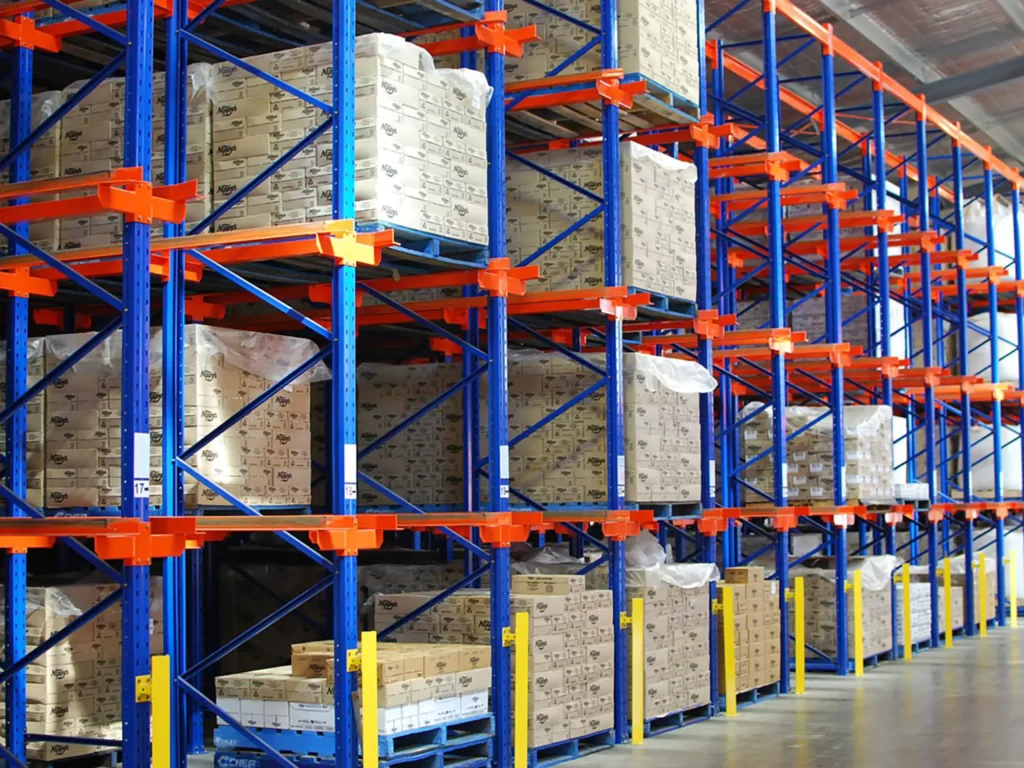
Drive-in/drive-through racking is designed for high-density storage and allows forklifts to drive directly into the racking system to access stored items. Disassembling drive-in racking requires the removal of cross braces, diagonal braces, and horizontal braces that connect the uprights.
Start by removing any stored items from the racking system, then use a wrench or ratchet to remove the bolts that secure the braces to the uprights. Once the braces are removed, it is time to lower the uprights to the ground using a forklift or other heavy machinery.
3. Push-Back Racking

Push-back racking is designed to allow forklifts to push pallets back into the racking system, creating a high-density storage solution.
Disassembling push-back racking requires removing the horizontal rails that support the pallets, which are typically attached to the uprights using bolts. Begin the process by removing any stored items from the racking system, then use a wrench or ratchet to remove the bolts that secure the rails to the uprights. Afterward, you can lower the uprights to the ground using a forklift or other heavy machinery.
4. Cantilever Racking
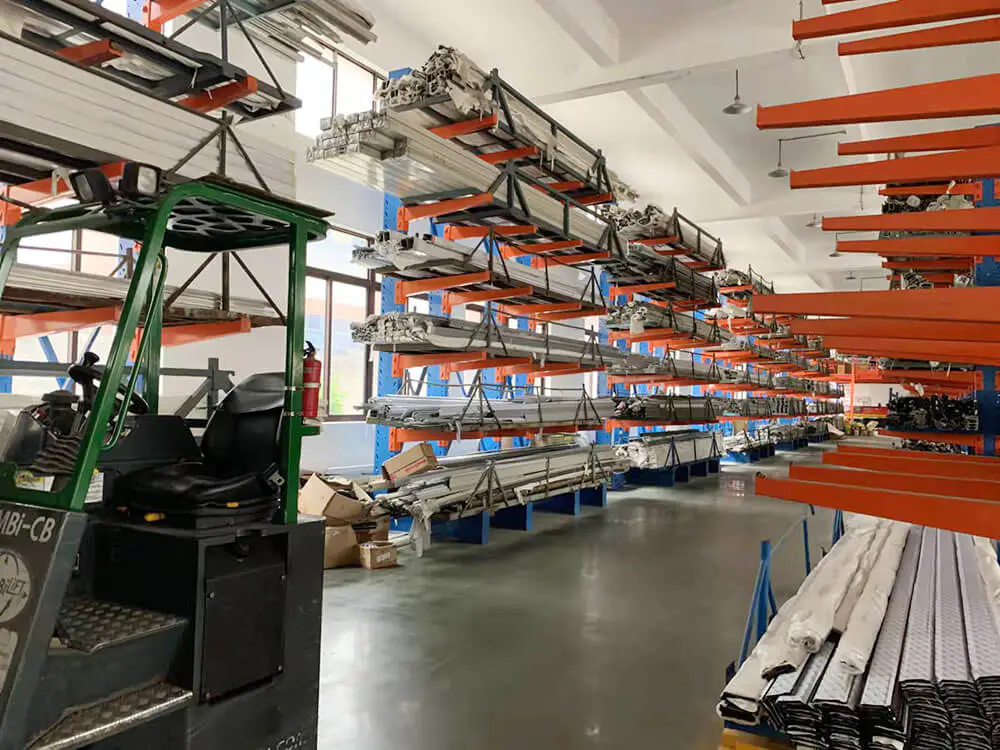
Cantilever racking is designed to store long or bulky items, such as lumber or piping, and consists of uprights with cantilevered arms that support the stored items. Disassembling this type of racking system requires removing the arms and supports from the uprights, typically secured using bolts.
The first step will be to remove any stored items from the racking system, then use a wrench or ratchet to remove the bolts that secure the arms and supports to the uprights. Once the arms and supports are removed, you can lower the uprights to the ground using a forklift or other heavy machinery.
Overall, the disassembly procedures for different types of pallet racking may have some differences in terms of the specific components that need to be removed and the tools required. It’s important to carefully review the manufacturer’s instructions or consult with a professional if you’re unsure about the disassembly process for a particular type of pallet racking.
How to Disassemble Pallet Racks? Conclusion
To sum up, disassembling pallet racking is an important process that requires careful planning, preparation, and attention to safety. By following the steps outlined in this article and taking the necessary precautions, you can disassemble your pallet racking in a safe and efficient manner.
Remember to start by preparing for disassembly, which includes reviewing the manufacturer’s instructions, assessing the condition of the racking, and ensuring you have the necessary tools and equipment. Then, move on to the disassembly steps, such as removing stored items, disassembling the horizontal beams, removing the uprights, and storing the components for future use or disposal.
It’s also important to note that the disassembly process may differ depending on your specific pallet racking type. Always review the manufacturer’s instructions or consult a professional if unsure about the process.
Following the guidelines outlined in this article, you can disassemble your pallet racking safely and effectively, freeing up valuable space and ensuring that your warehouse or storage area remains organized and efficient.




